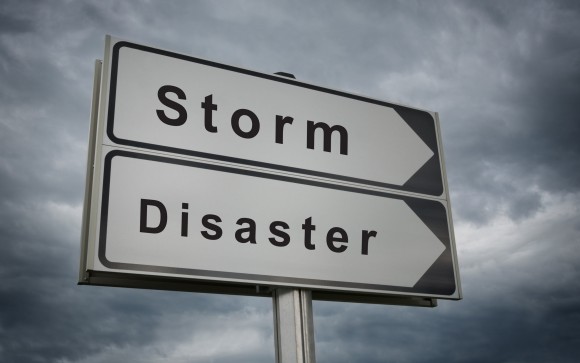Catastrophe modeling firm AIR Worldwide reports: “Severe Tropical Cyclone Christine made landfall at approximately 1200 UTC on December 30 between Whim Creek and Roebourne. Maximum sustained wind speeds were 157 km/h [97.3 mph] with gusts to 222 km/h [137.6 mph], making it a Category 3 storm on the Bureau of Meteorology’s (BOM’s) cyclone intensity scale (Category 2 on the Saffir-Simpson Scale).
“The central pressure of the storm was 955 mb at landfall. Significant wave heights of 8 meters [app. 25 feet] were expected at landfall, and the BOM called for a ‘very dangerous storm tide’ at the coast between DeGrey and Wickham.”
According to AIR, however, “significant insured losses are not expected from this event, primarily because of the region’s relatively sparse population, stringent building codes, and preparations in advance of the storm. No other cyclones are expected to develop or impact the western region of Australia in the next few days.
“Christine is currently a Category 1 storm according to the BOM (a tropical storm on the Saffir-Simpson Scale) with sustained wind speeds of 74 km/h [46 mph] (102 km/h [63 mph] gusts) and a central pressure of 998 mb. The storm is moving in a southeasterly direction at 31 km/h and has maintained tropical cyclone status due to low wind shear, in spite of being over land for 24 hours.”
AIR also indicated that, although Christine is expected to continue to weaken as it moves over southeastern Western Australia, “damaging winds are still possible near the center of the cyclone overnight and during the day on Wednesday, particularly on the northeastern side of the system. Moderate to heavy rainfall is also possible near the cyclone track. As a result, a flood watch has been issued for Goldfields.”
The storm brought torrential rain and destructive winds to communities between Port Hedland and Karratha in Western Australia’s Pilbara region. In Wickham, east of Karratha, there were reports of damaged roofs and uprooted trees.
In Port Hedland, there were reports of minor flooding, power outages, downed trees, and damaged roofs. However, given that the tropical cyclone came ashore as the tide was receding, the dangerous storm surge that was anticipated did not materialize. According to officials from the Superintendent of Fire and Emergency Services, the town suffered just a minimal amount of damage in spite of strong winds. In contrast, Roebourne was one of the hardest hit areas, recording nearly 100 millimeters of rain in just four hours.
AIR added: “Most residential and commercial structures in the Port Hedland area are expected to withstand today’s storm with very little damage, as these structures performed well during Tropical Cyclone George in 2007, when wind gusts reached 200 km/h [125 mph].
“Fewer than 2 percent of buildings sustained damage as a result of George’s force, and most of these buildings proved to have weaknesses due to poor maintenance. Still, Port Hedland has a number of trailer (caravan) parks for visitors and residents, and these structures are particularly vulnerable to damage. Some damage is expected to the roofing of residential structures, which are typically made of metal and are thus susceptible to wind damage.
“Some reported preparations made in advance of the storm include the evacuation of 29 vessels in the inner and outer anchorage areas of Port Hedland and the closure of major global iron operations. Assuming that most commercial/industrial facilities secured their structures and contents, as they typically do before a land falling tropical cyclone, these facilities should fare well in today’s storm. However, commercial and industrial buildings constructed of light metal framing will be the most susceptible to wind damage.”
Source: AIR Worldwide
Topics Australia
Was this article valuable?
Here are more articles you may enjoy.



 London Firms Are Letting More Staff Work Entirely From Home
London Firms Are Letting More Staff Work Entirely From Home  Hartford Q1 Income Up 41% on Commercial Lines as Auto Results Improve
Hartford Q1 Income Up 41% on Commercial Lines as Auto Results Improve  ‘Dirty Dozen’ Unsafe Employers Putting Workers at Risk
‘Dirty Dozen’ Unsafe Employers Putting Workers at Risk  Billionaire Ellison Is Moving Oracle to Nashville From Texas
Billionaire Ellison Is Moving Oracle to Nashville From Texas 

